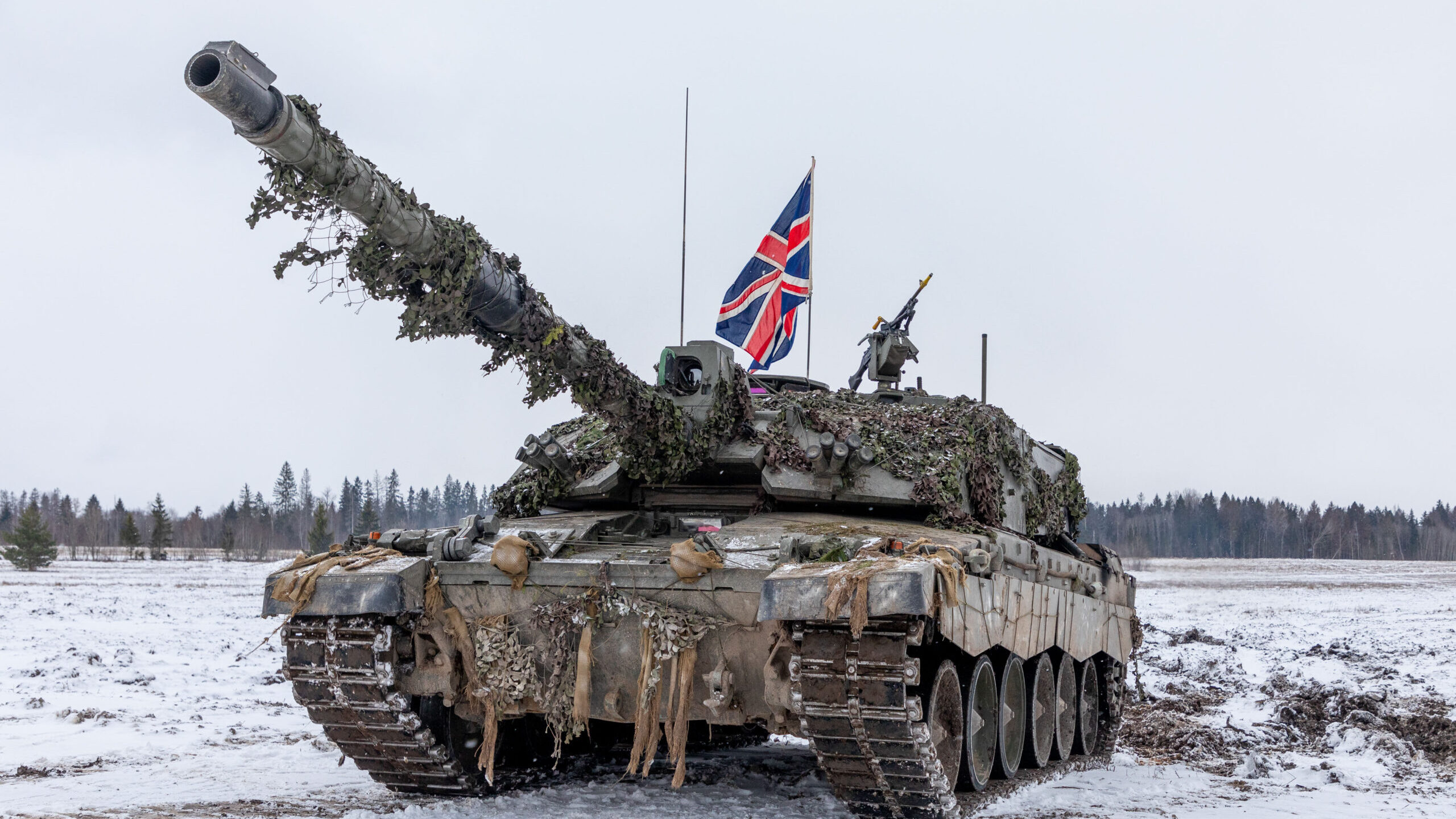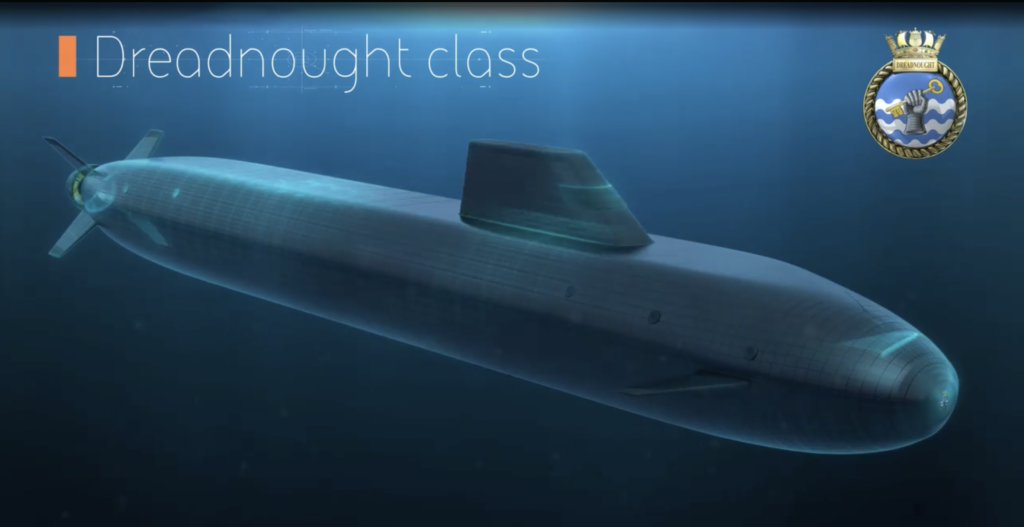
A British Challenger II during exercises in Estonia in January, 2023. (British Army photo)
Balancing its regional interests with global ambitions, post-Brexit Great Britain must walk a fine line between its commitment to Europe and its investment in the rest of the world. Despite the turmoil of 2022, when Russia’s invasion of Ukraine sent NATO scrambling while Britain itself saw three Prime Ministers in two months, the Sunak government’s new Integrated Review Refresh builds on the 2021 Integrated Review, seeking to prioritize Europe without sacrificing the Pacific. That’s the right choice, argues Joshua Huminski, director of the Mike Rogers Center for Intelligence & Global Affairs.
The United Kingdom’s recently published Integrated Review Refresh (IRR) reflects recent geopolitical trends and firmly grounds London’s approach to the world. While there are open questions about the government’s ability to actually fund its plans, in the main the IRR builds off an already strong foundation. The most obvious change is one of tone, abandoning the “Global Britain” marketing hyperbole found in the original 2021 Integrated Review. This new review reflects Prime Minister Rishi Sunak’s more managerial style, backing off the bombast of his predecessor, Boris Johnson. Washington should be pleased by both London’s realistic appraisal of the security environment and London’s response to the acceleration of trends identified in 2021.
Indeed, Washington was keenly watching London’s posture on two key areas—the Euro-Atlantic, especially following Russia’s invasion of Ukraine, and the Indo-Pacific, to which both the US and UK have long tried to “pivot.” In particular, the crucial question was how Britain would balance and resource its response to these two geostrategic challenges. Strategic and political alignment on these issues will reinforce the already strong operational level relationship between longtime allies.
The original Integrated Review was far more prescient than it is often given credit. Seeing Russia as an “acute threat” and China as a long-term geopolitical competitor, the 2021 IR accurately forecast the landscape, but just not how quickly these challenges would manifest. The new IRR sensibly notes “the pace at which these trends have accelerated over the past two years.”
The IRR firmly embeds the United Kingdom in Europe’s security architecture – though not its political structure, given London’s departure from the European Union. According to the IRR, the broader Euro-Atlantic “remains the primary theatre to which the UK will commit the majority of its defence capabilities in support of collective deterrence and defence” (emphasis added). Here, the United Kingdom will “maintain our leading position in NATO in the decade ahead.” Most notably, the IRR states that London will see 2% spending of its GDP on defense as a floor and targets 2.5% in the years ahead – down from a politically ambitious, though unrealistic, 3% pledge during the short-lived premiership of Liz Truss, and further subject to “fiscal and economic circumstances.” This is an important signal to the broader NATO alliance, but as the IRR itself notes, matching ambitions with reality on spending will be a challenge.
RELATED: Only 7 NATO members hit alliance’s 2 percent GDP defense spending target in 2022
While not a spending review, the IRR does commit the government to spend an additional £5 billion (US $6.2 billion at current exchange rates) over the next two years, primarily on “replenishing and increasing our stockpiles and investing in the resilience of the UK’s munitions infrastructure; and the continued modernisation of the nuclear enterprise, including investment in infrastructure, skills, and support to in-service submarines.” Of this, £3 billion ($3.7B) is directed to the nuclear enterprise (of which, more, below), with the remaining £2 billion ($2.5B) spent on arms replenishment (which is on top of £560 million war stocks replenishment approved in autumn 2022) considering the continued war in Ukraine and its resulting expenditure of munitions.
London’s support to Ukraine will continue and will continue to be critical. Thus far it has provided £2.3 billion ($2.9B) to Ukraine in military and humanitarian aid between 2022 and 2023 and is anticipating maintaining that level in the year ahead. The United Kingdom is providing increased training for Ukraine’s soldiers and sending 14 of its Challenger II main battle tanks along with 30 of its AS90 self-propelled howitzers to support Kyiv’s offensives.
Ukraine’s consumption of munitions is outpacing the ability of the West’s industrial base to replace spent inventory. The West is arming a former Soviet military, and effectively trying to bring it up to a NATO standard, which necessitates a change in tactics and doctrine. What’s more, it is trying to arm Ukraine for a high-intensity war in Europe after a 20 year period in which the United States and, to a lesser degree, the UK and the other NATO allies focused largely on counterinsurgency in Southwest Asia. Thus far, the demand signals and incentives from Western governments have been inadequate to encourage the acceleration or expansion of existing manufacturing, let alone spur the development of new lines of production. The £2 billion is a good start, but production remains a lagging factor.
While the UK is clearly committed to provide Ukraine tactical and operational assets to conduct its defense, the strategic end of the conflict remains unclear. The IRR states that the United Kingdom’s priority is to “support Ukraine to reassert its sovereignty and deny Russia any strategic benefit from its invasion.” What this means in practice is left purposefully vague, a papering-over of differing opinions on what the end-state could or should be to avoid schisms within the Western alliance. This artful obscurity is reflected in oft-repeated statements such as “it is up to Kyiv,” which, while not wholly inaccurate, understate Western influence on the outcome.
As outlined in the original IR, the United Kingdom intends on tilting toward the Indo-Pacific. Whilst the nuance was largely lost on Washington, this meant more than just the provision of hard power and equipment. The focus was more about multi-lateral engagement, trade, and soft power, in addition to the dispatching of Royal Navy assets. While the 2021 IR saw China as a geostrategic competitor, the IRR clearly sees Beijing as an “epoch-defining challenge” and states that London “believes that a free and open Indo-Pacific is one where a regional balance of power ensures no single power dominates.” (One could, perhaps, rather cheekily read a bit too much into the “no single power” comment.)
The aforementioned £3 billion investment in the nuclear enterprise supports the UK’s “tilt” to the Indo-Pacific and helps lay the groundwork for the expansive AUKUS program. The IRR’s release near simultaneously with the joint announcement by Sunak, President Joe Biden, and Prime Minister Anthony Albanese of Australia on the details of AUKUS firmly reflects the tangible elements of London’s continued “tilt” toward the Indo-Pacific. While London is working to firmly embed itself in the security architecture of the Indo-Pacific and pursue trade agreements throughout the region, the AUKUS accord sends a definitive signal to China and Washington of 10 Downing Street’s substantive commitment to regional security. Under AUKUS, London will dispatch one of its Astute-class submarines to Australia to join the rotation of America’s Virginia-class attack boats. At the same time, the UK will work with Australia on the next generation SSN-AUKUS submarine, which will be jointly designed and constructed by the UK and Australia using American technology.
The hardware and military priorities of the United Kingdom are referenced, but not elaborated in the IRR. These will be addressed by a forthcoming Defence Command Paper (DCP) update. Interestingly, the Ministry of Defence has issued a call for papers from the public to assist with the development of the DCP. Publication of the updated DCP is expected by June, prior to the NATO Summit in Vilnius, Lithuania (11-12 July). Washington – and Moscow – will closely watch what platforms the UK prioritizes, how it will integrate with NATO’s strategic concept, and where it focuses its energies. Indeed, there is an open question the DCP should try to answer: What is the British Army’s purpose in a post-Brexit, post-Iraq, post-Ukraine world?
Another open question is whether the IRR’s priorities will carry over if, as it appears at the time of this writing, if 10 Downing Street changes hands in the next general election, which can be held no later than January 2025. Thus far, the Labour Party seems more inclined to reorient towards Europe and away from the Tory Party’s “tilt” toward the Indo-Pacific. If this comes to pass, it could present some challenges for Washington’s ambitions to mobilize the Anglosphere against Beijing’s hegemonic ambitions.
In the main, the IRR is a sensible, rational, and clear-eyed reflection of the geostrategic trends that accelerated over the last two years. The UK’s approach builds on its strengths and prioritizes the Euro-Atlantic, but not to the exclusion of the Indo-Pacific. Resourcing will remain a key open question, especially in a time of tightening budgets and competing domestic spending priorities. Washington should welcome London’s sound strategic calculus, which puts the trans-Atlantic relationship on an even stronger foundation.
Joshua C. Huminski is Director of the Mike Rogers Center for Intelligence & Global Affairs at the Center for the Study of the Presidency & Congress, and a George Mason University National Security Institute Fellow. He can be found on Twitter @joshuachuminski.
























